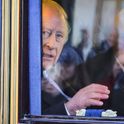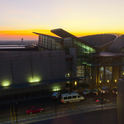Since the appalling attack on the Charlie Hebdo offices on Wednesday, I’ve heard many people—Muslim and non-Muslim—confidently assert that depicting the Prophet in Islam is strictly forbidden. Although it’s true there is a strong iconoclastic streak in the religion, there is also a significant alternative tradition of representing the Prophet in Islamic history books and devotional manuals—a tradition not especially well known in the West because Muslim clergy have often condemned or tried to suppress it.
Nothing in the Koran forbids image-making but it does worry about idol-worshipping. A century after the Prophet died in 632, around the time his first biography was being circulated, religious authorities tried to avoid replicating what they saw as the misguided Christian adoration of Jesus and avoided painting him, especially in places of worship.
Until today mosques are never decorated with images of Muhammad or any other human figure. The anxiety about turning him into a quasi-divine figure is central to the early theological wrangles between Islam and the religions it confronted—not only Christianity, but also Zoroastrianism and Hinduism in the East, which have their own rich religious artistic heritages. Yet there were some image-friendly stories in the canonical biography of Muhammad: after he conquered Mecca, for example, he ordered all pagan images to be destroyed, except for one of a Madonna and Child.
One of the earliest surviving images of the Prophet appears in an illustrated world history commissioned by a Mongol ruler in 1307. He is shown uniting the warring Arab tribes by restoring the sacred black stone to the Kaaba. Apart from his long flowing hair and downcast eyes, he seems indistinguishable from the men surrounding him. The picture is now held at Edinburgh University, but at last year’s exhibition displaying images from the book, it was conspicuously absent. Interestingly, in that image there is no fiery halo round the Prophet’s head—a motif that would later become important in Persian miniatures.
In the 14th and 15th centuries, poems and prayers lauding Muhammad’s noble qualities began to feature pictorial representations of Islam’s founder. You could compare them to Christian images of Mary, of which there are also many Islamic variants. In a 14th-century image from Shiraz, now held at the Bibliothèque nationale de France in Paris, the Prophet ascends to heaven on a winged horse surrounded by angels. (The story of the ascension is derived from a brief reference in the Koran.)
His facial features have been damaged—possibly from later iconoclasm—but in the words of Islamic art expert Christiane Gruber from Michigan University, “his black beard, arch-shaped eyebrows, round cheeks, rosy lips, and two long hair plaits are still visible.” The Prophet’s ascension has inspired some glorious artistic productions. A personal favourite is the Miraj Nameh, made in 15th-century Khorasan for the son of Timur the Lame. In Dantesque fashion, the Prophet sees the unholy being punished in hell and meets the patriarchal prophets in heaven. (An excellent edition is available with commentary by Marie-Rose Séguy.)
By the 17th century, unveiled images of the Prophet became more rare as patronage decreased and a cultural conservatism took hold. More often he came to be represented as a flaming circle with his name in the middle. But such images have not completely disappeared. In the Shia suburbs of Damascus, paintings of saints are common and I have even seen the Prophet riding his winged horse on a mural in Iran.
Needless to say in Saudi Arabia such unorthodoxy is banned. Some Muslims see Charlie Hebdo’s emphatically un-pious approach to Muhammad as deriving from medieval polemics. For example, a late-Gothic fresco in Bologna showing the Prophet being tortured in hell, which al Qaeda apparently wanted to blow up in 2002, or the church in Dendermondse in Belgium, where there is a sculpture of the Prophet being trampled by angels. But Charlie Hebdo, as anti-Christian as it is anti-Islamic, would probably balk at being associated with such clerical propaganda.
Modern western images of Muhammad are by no means always critical of Islam—as some who obsess over the 2006 Danish cartoons published by Jyllands-Posten or the South Park episode from 2010 in which the Prophet appeared might think. (That episode was never aired by Comedy Central.) Along with Moses and Charlemagne, he is one of 18 lawgivers carved on the US supreme court building. Bizarrely, a German meat extract company produced some lovely postcards of the Prophet’s life in 1928 as part of a series of great figures in history.
I’ve long thought it would be a great idea to have an exhibition devoted to images of Muhammad—both Islamic and non-Islamic, devotional and polemical—to give some much-needed context to a debate that often seems to produce more heat than light. Under the current grim circumstances, though, I can’t imagine that happening.
Charlie Hebdo: Does Islam forbid images of the Prophet?
Charlie Hebdo was attacked for depicting Muhammad but drawing the Prophet has a long tradition in Islam
January 09, 2015












